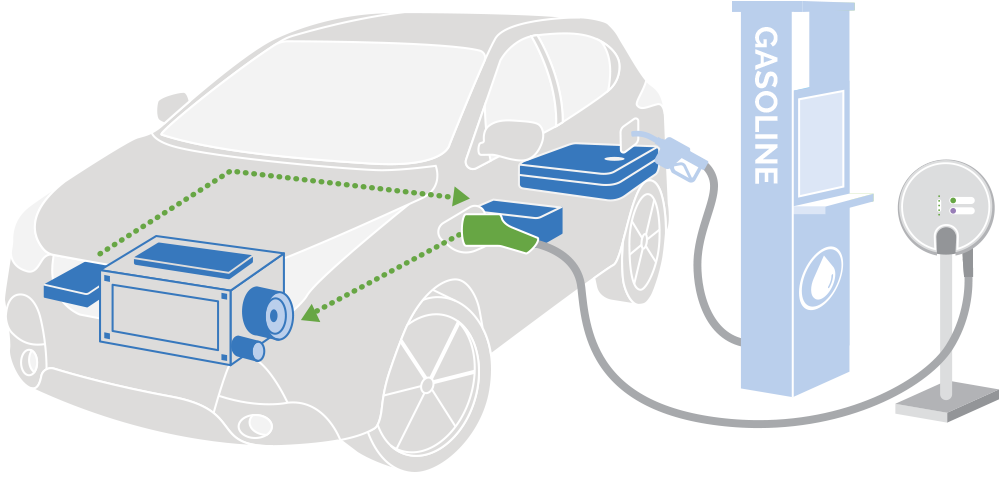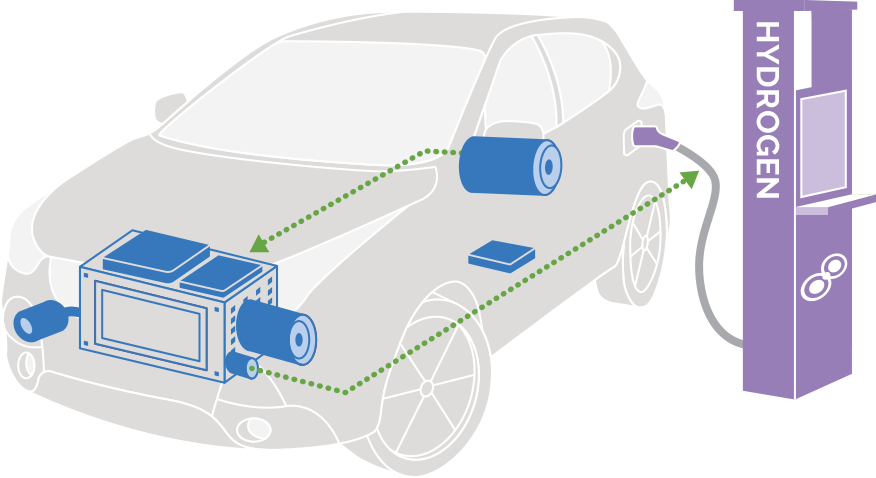Electric Car Overview
Electric cars come in three main types with differing power systems designed to meet varying driving needs.They are: fuel cell, battery-electric, plug-in hybrid electric cars.
Battery-Electric Cars

Battery-Electric Cars
Battery-electric cars are all electric and don’t use gasoline, and instead have a large battery that powers one or more electric motors. Currently, battery-electrics have a driving range of 80 to more than 500 miles, with ranges increasing as new models are introduced. In addition to driving past the gas station, battery-electrics don’t require much maintenance (such as oil changes, smog checks, spark plug changes and replacing a catalytic converter or various other parts that wear out and break down) compared to gas cars.
Charging a battery-electric car can be done at home using standard 120-volt or 240-volt house plugs, or away from home at public or workplace charging stations. One benefit of battery-electric cars over plug-in hybrids is the capability to use DC fast chargers, which provide more than 100 miles of range in 30 minutes.
Learn more about battery-electric cars.
Plug-in Hybrid Electric Cars

Plug-in Hybrid Electric Cars
Plug-in hybrid electric cars offer both gas-only and electric-only driving—even at relatively high speeds. With smaller batteries than battery electrics, plug-in hybrids achieve an electric-only range of 10-80 miles, during which they produce no tailpipe emissions. When the car uses up its electric range, it switches to gas and drives just like a conventional car.
Because most Californians commute less than 30 miles, most plug-in hybrid electric driving can be done in electric-only mode.
Learn more about plug-in hybrid cars.
Fuel Cell Electric Cars

Fuel Cell Electric Cars
A fuel cell electric car runs on electricity, but does so differently than battery-electric cars or plug-in hybrids. Its power system is composed of numerous cells combined into a stack that chemically combine hydrogen gas from the car’s tank and oxygen from the air to produce electricity.
Fuel cells have a driving range of 300-400 miles on a single tank and can be refueled in about five minutes at hydrogen fueling stations, which are becoming more common in California. An additional benefit for fuel cell drivers is that auto manufacturers provide three years’ worth of free hydrogen fuel. Incentives like this are why many Californian’s are choosing to drive electric.
Learn more about fuel cell electric cars.
